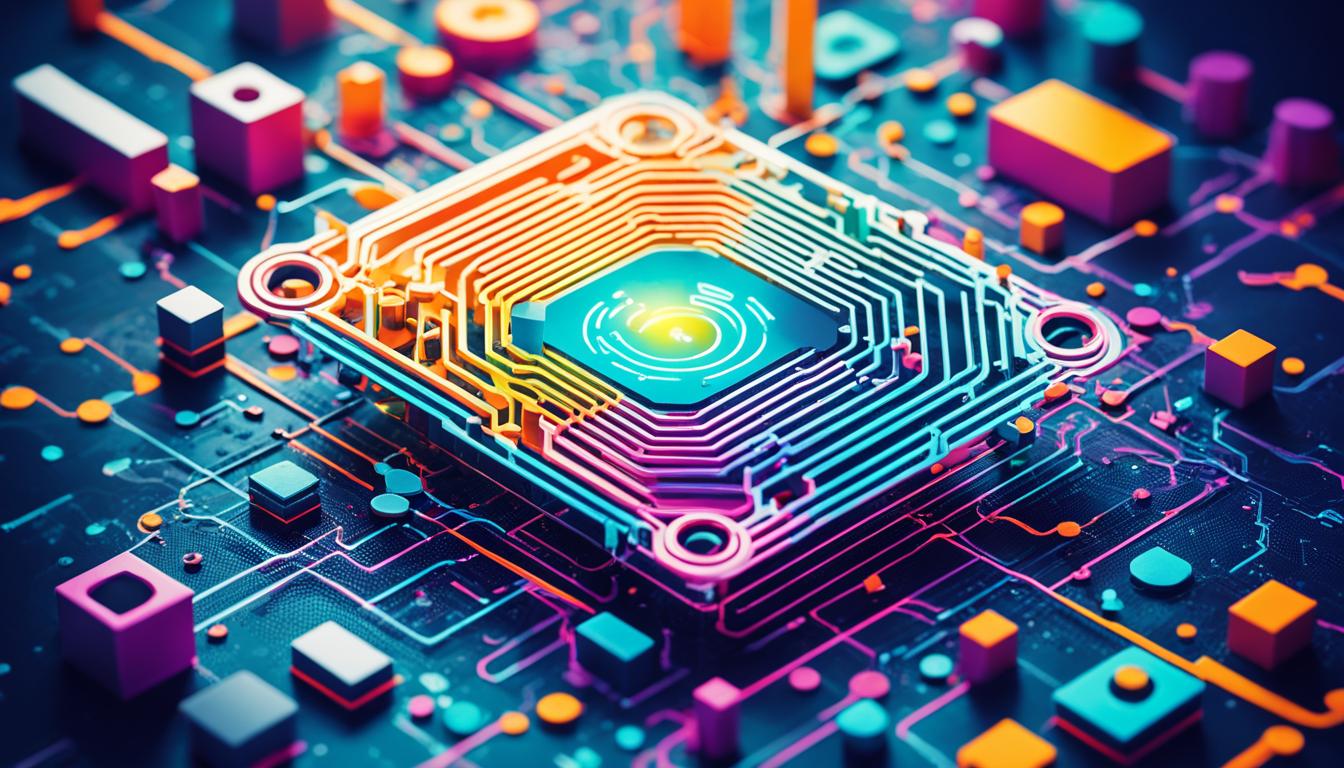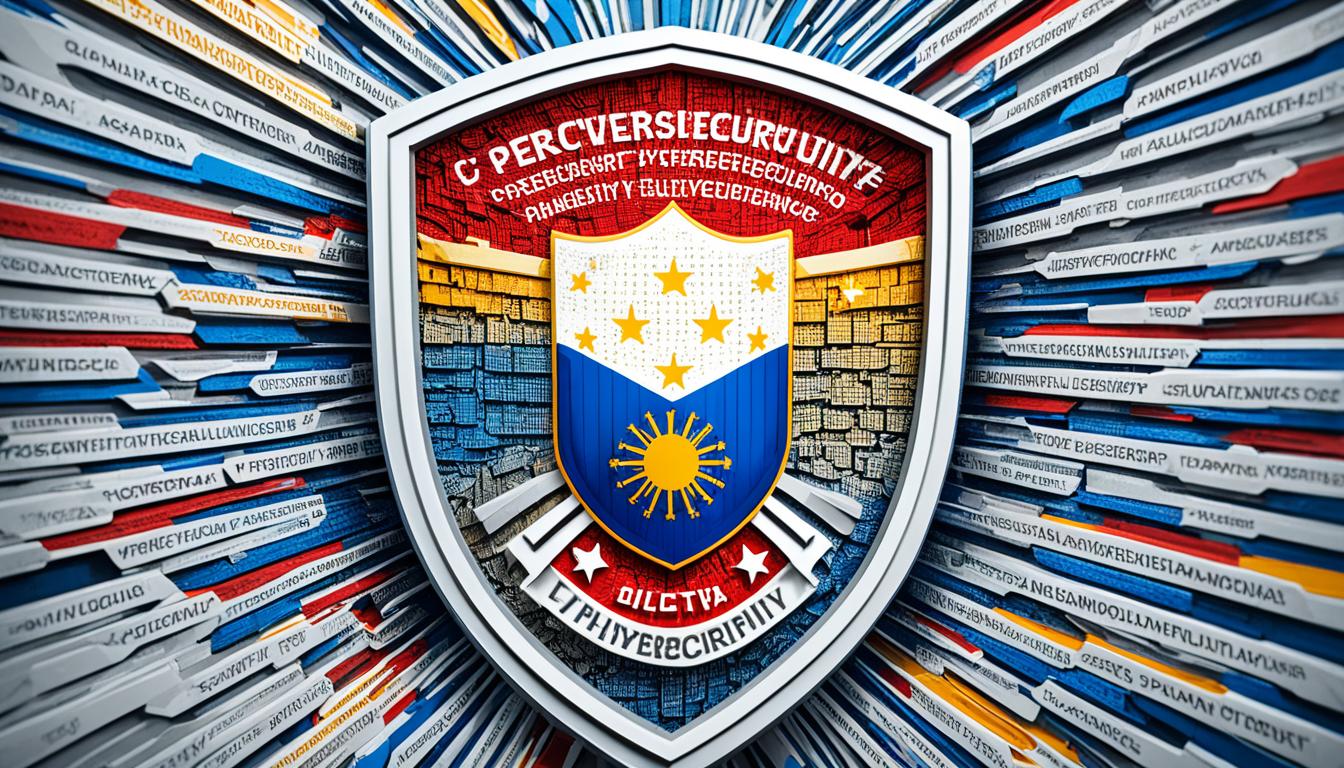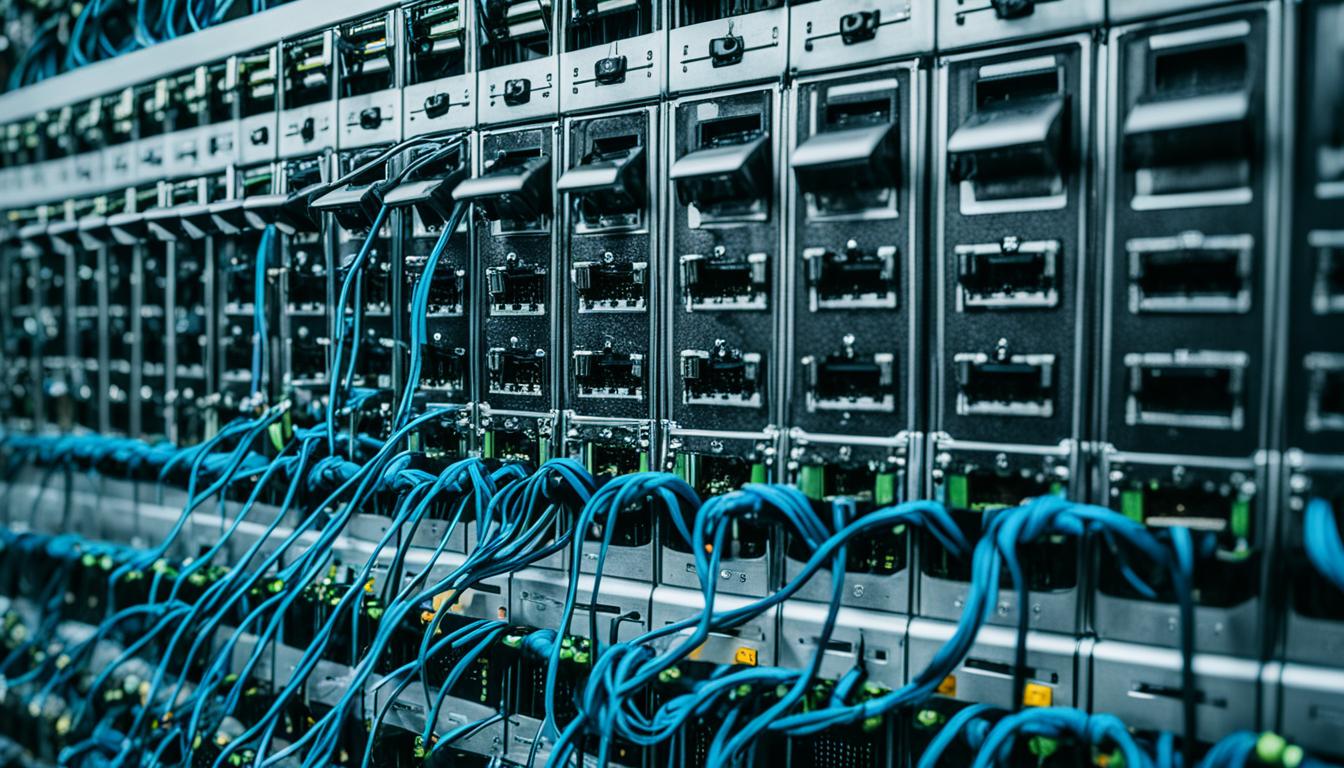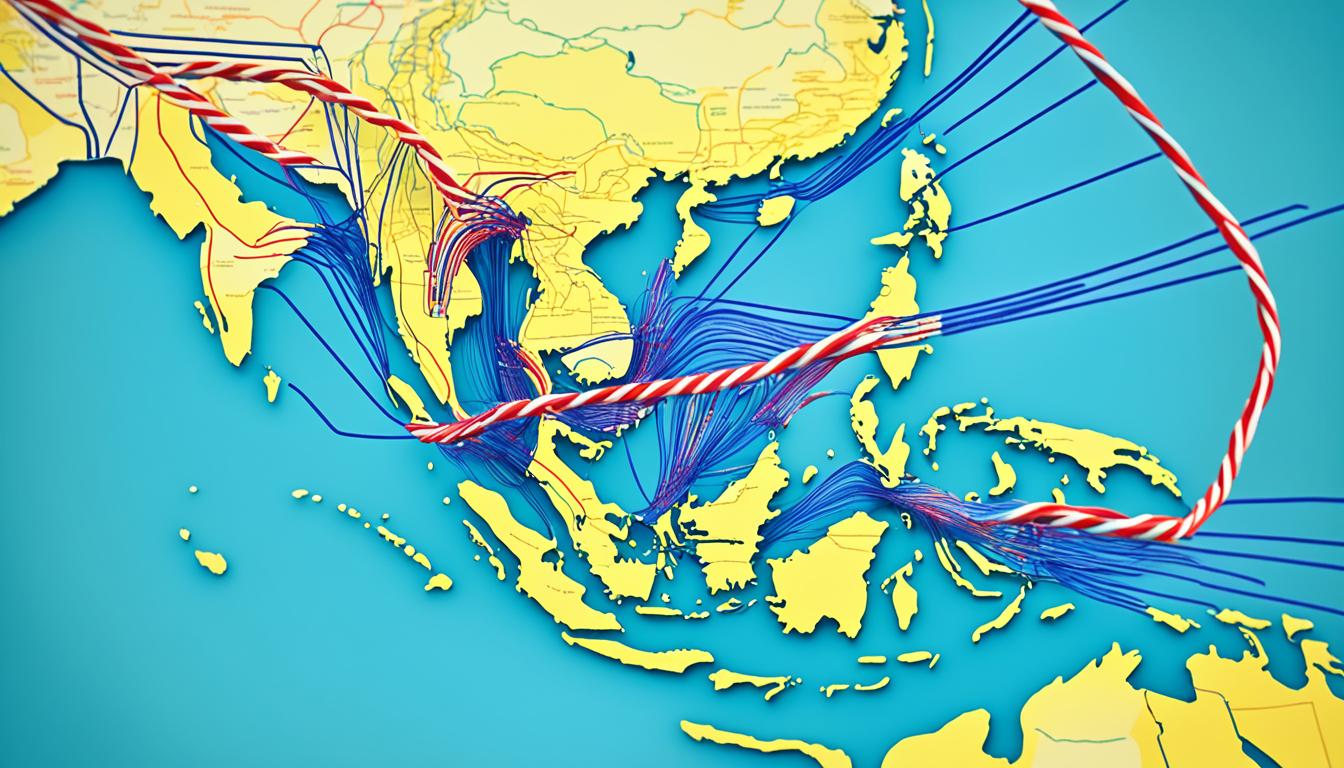Welcome to the cybersecurity world in the Philippines! Nowadays, everything is connected through the internet. This makes keeping our data safe more important than ever. Hackers and cybercriminals are always looking for new ways to attack. This puts our personal and business information, even our nation’s security, at risk. How can we keep our data safe from these threats?
This piece focuses on cybersecurity in the Philippines. It looks at why safeguarding your data is crucial. We’ll see the current situation in the country and talk about ways to strengthen your digital defense. Whether you own a business, work as an employee, or want to keep your personal info safe, you’ll find useful tips here. These are specific for the safety of your data in the Philippines.
First, let’s see why cybersecurity is so vital today. It affects both businesses and individuals in our tech-savvy society. We’ll look at the current cybersecurity scene in the Philippines. This will help us understand the risks and figure out how to protect our data better.
Are you prepared to start securing your data and keeping it safe? Let’s get started!
Key Takeaways:
- Cybersecurity is of paramount importance in the interconnected world we live in.
- The Philippines faces unique cybersecurity challenges that require tailored solutions.
- Understanding the current landscape helps us make informed decisions to protect our data.
- Implementing proactive measures is essential for maintaining the security of our personal and business information.
- Join us as we explore diverse approaches and solutions for strengthening online security in the Philippines.
Understanding Cybersecurity in the Philippine Context
Knowing about cybersecurity is important in our digital world. It’s key for businesses to protect their data from cyber threats. With technology getting more advanced, so do the risks from cybercriminals. This is why businesses must keep their cybersecurity strong.
The Importance of Cybersecurity in Modern Business
Today, information is super valuable. This makes cybersecurity essential for businesses. A lack of security can lead to data breaches, losses, and harm to a company’s reputation. It also puts customer trust at risk and might lead to legal trouble.
Cybersecurity keeps systems safe and complies with rules. It makes sure that systems and networks work properly. Businesses must focus on security to avoid these problems.
Current Cybersecurity Landscape in the Philippines
The Philippines is quickly adapting to digital growth. But, this brings more cyber threats. Cybercriminals find new ways to attack through digital transactions, online banking, e-commerce, and remote work.
Facing these threats, Filipino organizations must deal with many challenges. These include keeping information safe and following regulations. There’s also the danger of social engineering, ransomware, and phishing. This makes robust cybersecurity more vital.
Despite these issues, the Philippines is primed for cybersecurity development. It has a skilled IT workforce and a supportive government. This creates a good base for better security practices in organizations.
Next, we’ll look at how businesses can up their cybersecurity. By taking the right steps, they can lower their cyber risk. This promotes a secure digital space for everyone involved.
Diverse Approaches to Strengthening Online Security
In our digital world, strong online security is key. It helps shield sensitive information and keep us safe from cyber threats. We’ll look at improving security on networks and devices, especially those part of the Internet of Things (IoT).
Network Security Essentials
Keeping data safe from attacks is essential. By setting up strong security on networks, both people and companies can protect their online space. Let’s go over some key practices for network security:
- Use strong, unique passwords and turn on multi-factor authentication to block out unauthorized users.
- Keep your software, apps, and firmware updated to fix security holes.
- Have firewalls and systems that spot and stop harmful traffic on your network.
- Split your network up so if one part gets hit, it won’t spread easily to the rest.
- Keep important data protected by using encryption, making sure it stays private and unchanged.
If you use these practices often, you can make it harder for online dangers to get through. This lowers the chance of cyber attacks and keeps your data safer.
Endpoint Security and Internet of Things (IoT) Considerations
The more we connect devices in the IoT age, the more important securing these endpoints becomes. Things like phones, laptops, and IoT gadgets could let bad actors in. Here’s what you can do for better endpoint security:
- Put strong antivirus and anti-malware on all devices to stop harmful software.
- Always update your devices’ software to fix any weak spots found.
- Let only the right people access these devices. Use methods that make sure they are who they say they are.
- Watch over and control your IoT devices so they follow strict security rules.
- Tell employees and users how to surf the web safely, avoid tricks, and keep security in mind always.
As more IoT gadgets join different fields, taking care of each endpoint is crucial. It helps keep important data safe and protects vital systems.
To boost online security, using a mix of network and endpoint protection is vital. Today’s world needs us to be ready against online threats. Acting before these threats strike and using trusted security tools can keep digital spaces secure.
Strategic Defense Against Internet Threats
Today, organizations meet many internet threats. These can steal private data or stop business. So, it’s important to use strong defenses and smart strategies.
Setting up a robust network security is a first step. This means using firewalls and intrusion detection. They watch over network traffic coming in and going out. This way, it’s harder for outsiders to sneak in or steal data.
Keeping endpoints secure is also key. Endpoints include not just computers, but also IoT devices. Strong security for these, like encryption and multi-factor authentication, helps stop cyber attacks.
“There are only two different types of companies in the world: those that have been breached and know it and those that have been breached and don’t know it.” ― Ted Schlein
To stay ahead of cyber threats, organizations can use threat intelligence and run checks for system weaknesses. This way, they know what to look out for and fix problems before they cause harm.
Teaching employees about cybersecurity is crucial. This helps them spot and report possible threats. Things like ongoing training and fake email tests keep everyone ready to face cyber dangers.
To show how defense strategies work, look at the table below. It highlights how different organizations have tackled cyber threats.
Cybersecurity Philippines: Key Challenges and Solutions
In the Philippines, safeguarding data faces unique challenges. We will look at the major issues businesses and people face in securing data. Then, we’ll highlight valuable solutions to lower the risks.
The main hurdle in the Philippines is the ever-changing threat environment. Cybercriminals keep inventing new ways to exploit weaknesses. Businesses and individuals must keep their security methods up-to-date to beat these threats.
Next, there’s a problem with not knowing enough about staying safe online. Most don’t understand the dangers or how to protect themselves. Raising awareness through learning programs and campaigns plays a big role in solving this issue.
The fast increase in using digital technology has made us more connected. This also broadens the area cybercriminals can attack. Thus, having strong security measures for all devices and networks is essential.
Moreover, cybersecurity needs a holistic approach. It involves securing the network, encrypting data, managing access, and planning for emergencies. Using many security layers is the key to keep away complex cyber threats.
Collaboration and sharing info are essential in fighting cybercrime well. When organizations and the government work together, they can build a stronger defense. This keeps the cybersecurity system a step ahead of criminals.
To sum up, protecting data in the Philippines requires tackling specific challenges head-on. By acting early, spreading awareness, and working together, both businesses and individuals can defend their important data better.
Common Cyber Attacks Targeting Filipino SMEs
Filipino SMEs are facing more cyber attacks. This puts their private data and operations in danger. Knowing the common cyber threats is key to protecting themselves. SMEs must use proactive cybersecurity steps.
Understanding the Threats: Malware, Phishing, and More
Malware and phishing are big issues for SMEs in the Philippines. Malware is bad software that can break systems, steal info, or get into networks. Phishing uses fake emails or messages to get personal or financial info. These threats hit SMEs often because they’re not always well protected
Other common threats include:
- Ransomware: This locks victim’s data until a fee is paid.
- Business Email Compromise (BEC): It tricks employees into sending money or info to cyber attackers.
- Supply Chain Attacks: This is when hackers use suppliers’ weak spots to get into SMEs systems.
Implementing Proactive Measures for Cyber Defense
To stay safe from these threats, SMEs need to be proactive. They should mix technology, staff training, and clear policies. Here are steps to improve their cybersecurity:
- Use good antivirus and anti-malware software.
- Update all software and systems regularly to fix known issues.
- Educate staff about spotting and avoiding phishing.
- Add multi-factor login security.
- Have strong data backups to reduce ransomware impact.
- Check for and fix system weaknesses with regular audits.
By following these proactive steps, Filipino SMEs can lower their cyber attack risk. This helps keep their data safe and their business running smoothly.
Building a Robust IT Security Framework
Security in IT, or cybersecurity, is very important for data systems. A strong IT security framework helps organizations protect their data. It gives them a clear way to manage and lessen risks and threats.
This framework is critical for businesses in the Philippines. It helps keep their important information safe. This way, they can keep their business running smoothly.
To build a good IT security plan, you need to do a lot of things. First, check for any risks to find what’s most important to protect. This involves looking at the company’s setup, how it works, and its tech tools.
Next, put in place the right security steps and policies. This might mean tight controls over who can use what (access controls), using codes to protect data (encryption), and defenses like firewalls. It also means always making sure your software is up to date.
Teaching staff about IT security is also key. IT security awareness programs are important. They show employees why protecting data is crucial. This helps everyone at the company spot and stop possible threats.
Keeping your IT security up-to-date is a must. Regular checks and making sure everything is working right is crucial. This helps find any weak points and fix them before they become a problem.
Remember, cybersecurity is always evolving. Constantly checking and improving your IT security framework is key to staying safe.
Putting the right focus on IT security helps Philippines businesses a lot. It keeps their data safe from cyber attacks. Given how cyber threats are always changing, this is vital for any business’s longevity.
So, are you ready to make your business’s IT security strong? Protect your data, make your company more secure, and beat the cybercriminals. It’s time to get serious about IT security.
Incorporating Cyber Defense into Business Continuity Planning
In today’s world, cyber threats are a big danger to businesses. It’s vital to mix cyber defense with business continuity planning. This article explains how to find key assets and functions. We’ll also talk about making plans to deal with cyber incidents.
Identifying Critical Assets and Functions
When making a business continuity plan, you pinpoint important assets and functions. This step is critical for handling cyber defense. You check how vulnerable important things are to cyber attacks.
First, you should conduct a risk assessment. This lets you see how much damage a cyber incident could cause. Think about the data’s importance, intellectual property worth, and tech processes used by the company.
After finding essential assets and functions, put safety measures in place. This might mean better access controls, using encryption, and backing up data often. These steps help ensure your data stays safe and available.
Designing Incident Response Strategies
A solid incident response strategy is key in cyber defense. The quicker you respond to a cyber attack, the less damage you’ll have. This is why a good plan is crucial.
Your plan should detail what to do in an attack. It outlines who does what, how to communicate, and when to escalate problems. It also prepares you to analyze the threat, recover systems, and learn from the experience.
It’s also important to regularly check and test your incident response plans. By simulating attacks, you can find and fix any weak points. This keeps your response strategy sharp.
| Benefits of Incorporating Cyber Defense into Business Continuity Planning | Actions |
|---|---|
| Enhanced protection of critical assets and functions | Implement robust access controls |
| Reduced downtime and impact of cyber incidents | Regularly backup data |
| Improved incident response capabilities | Design and test incident response plans |
| Enhanced organizational resilience | Review and update plans regularly |
| Compliance with cybersecurity regulations | Ensure adherence to regulatory requirements |
Integrating cyber defense with continuity planning helps protect us from digital threats. This proactive approach is crucial. It defends vital assets, lowers risk during cyber attacks, and boosts an organization’s strength. With solid response plans, firms can quickly handle, bounce back, and learn from any cyber challenges.
Legislation Impacting Cybersecurity in the Philippines
In this part, we’ll look at laws affecting cybersecurity in the Philippines. The country knows how important it is to keep data safe from cybercrime. It has made laws like the Cybercrime Prevention Act and set rules for moving data across borders.
The Cybercrime Prevention Act and Data Privacy Concerns
The Cybercrime Prevention Act, or Republic Act No. 10175, covers many cybercrimes. It sets the rules and punishments for acts like hacking and online scams. The goal is to make the internet safer for everyone.
This act focuses a lot on keeping personal data safe. It makes sure that when companies collect data, they follow strict privacy rules. This way, people’s personal details are kept private and secure.
Guidelines for International Data Transfers
As companies work more globally, moving data between countries is common. But, it must be done securely and legally. The National Privacy Commission (NPC) guides companies on how to properly move personal data out of the Philippines.
Companies must get permission from people before moving their data. They also need to check if the other country has good data protection. Using things like encryption helps keep data safe. By following these guidelines, data privacy and security are maintained.
| Legislation | Key Points |
|---|---|
| The Cybercrime Prevention Act | – Deals with many cybercrimes – Sets up laws and punishments – Protects data privacy rights |
| Guidelines for International Data Transfers | – Highlights the need for permission and good data protection – Ensures data privacy during global transfers |
Obeying laws like the Cybercrime Prevention Act and following data transfer rules is key to good cybersecurity in the Philippines. Companies that know and abide by these laws make the digital world safer for all. They protect both people and businesses online.
Developing a Culture of Cybersecurity and Compliance
In our digital world, it’s critical for companies to focus on cybersecurity and compliance. They do this to keep data safe and reduce risks. To build a culture of cybersecurity, companies work to raise awareness, encourage good habits, and make sure everyone thinks about security.
To start a strong cybersecurity culture, we need to educate and train employees. They should have regular sessions on cybersecurity to know about threats, how to protect data, and meet rules. With this knowledge, they can spot and handle cyber threats well, lowering the chance of data leaks.
Companies also need to set clear rules and methods for cybersecurity and compliance. These rules should talk about things like how to handle passwords, control who can access data, back up data, and react to problems. With clear policies, everyone knows how to keep things safe.
It’s key to get everyone involved in cybersecurity and hold them accountable. Employees should always report anything odd or a potential risk. When a work environment allows for this open reporting, it keeps everyone alert and helps deal with security issues as they come up.
Doing checks and audits is important for seeing if our cybersecurity and compliance efforts work. Regular assessments help find ways to do better, fix weaknesses, and see how well these efforts are working in general.
Besides these steps, being active about cybersecurity is important. This means keeping up with new threats, using the latest in security tech, and checking and improving security plans often.
Putting in place a strong cybersecurity culture and compliance plan is key to keeping data safe, stopping threats, and making sure business goes on without interruptions.
Conclusion
We’ve looked at why cybersecurity is so important in the Philippines. We’ve seen the kinds of online dangers that companies face. It’s critical to keep data safe because cyber attacks are getting more advanced.
There are many ways to make online security stronger. We’ve talked about essential things like network security and keeping the end devices safe, especially in IoT. By being proactive, businesses can better protect themselves from online threats.
Also, we discussed the challenges small to medium Filipino businesses encounter. We pinpointed malware and phishing as big threats. Knowing these dangers and making cybersecurity part of daily activities helps create a culture that values data security.
In summary, Philippines’ firms need to make cybersecurity a top priority. By securing their networks, teaching employees, and following the laws, they can reduce the risk of cyber attacks. Remember, keeping our data safe is something we all need to work on together for a safer internet world.
FAQ
What is cybersecurity and why is it important in modern business?
Cybersecurity protects computer systems and networks from harm. This field is vital for businesses. It keeps their data safe, avoids financial losses, and builds trust with clients.
What is the current cybersecurity landscape in the Philippines?
In the Philippines, cybersecurity challenges include data breaches and ransomware. As more digital tools are used, protecting data is critical. Organizations must focus on cybersecurity to secure their information.
How can I strengthen online security for my business?
To make your business’s online security stronger, use firewalls and encryption. Secure Wi-Fi helps too. Don’t forget about antivirus programs and updates. Also, secure your IoT devices and use multi-factor authentication.
What are some proactive strategies for defending against internet threats?
Being proactive is key to defend against cyber threats. Organizations should update software and do security checks often. Training employees on cybersecurity and having a plan for cyberattacks are also important steps.
What are the key challenges faced in cybersecurity in the Philippines, and how can they be overcome?
The Philippines faces cyber problems like lack of awareness and limited resources. To tackle these, awareness and education are crucial. Investing in better infrastructure and cooperating with the government will help too.
What are common cyber attacks targeting Filipino SMEs, and how can they enhance their cybersecurity defenses?
Malware and phishing are common attacks on Filipino SMEs. They can protect themselves better by using email filters and doing security checks regularly. Teaching employees about safe internet use and regularly backing up data is smart too.
How can I build a robust IT security framework for my organization?
To create a strong IT security framework, start by assessing risks. Develop and enforce security procedures. Keep systems updated and educate employees on security measures.
How can cyber defense be integrated into business continuity planning?
Cyber defense and business plans can merge by focusing on critical functions. Identify risks and plan responses. Regular checks and updates help prevent cyber incidents’ big impacts.
What is the legislation impacting cybersecurity in the Philippines?
The Cybercrime Prevention Act in the Philippines fights computer crimes. It also has rules for sharing data internationally. Organizations need to follow these regulations to keep data safe and avoid cyber threats.
How can I develop a culture of cybersecurity and compliance within my organization?
To build a secure culture, train your team and set clear rules. Do security checks regularly. Make being safe online a part of daily thinking. Also, support open talk about security concerns.



